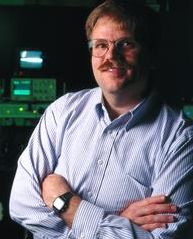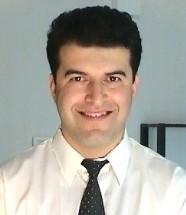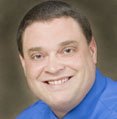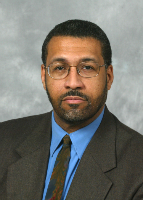Research Areas
Click on the links on the right learn more about our research areas.
In each area we aim to establish a detailed molecular-level view to guide new device and material developments.
Chemical Sensors
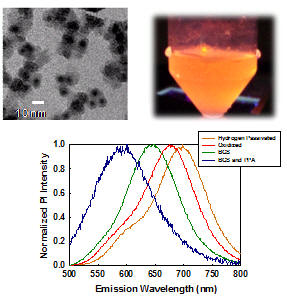
SiNC TEM (top left), photoluminescence (top right), and analyte-dependent photoluminescence spectra from hybrid silica-silicon nanosensors
We are exploiting the intrinsic photoluminescence (PL) from silicon nanocrystallites (Si nanocrystals – SiNCs and porous silicon – pSi) as a vehicle for developing nanoscale sensors and sensor arrays.
In collaboration with Prof. Mark T. Swihart in UB’s Chemical and Biological Engineering Department (http://www.cbe.buffalo.edu/people/full_time/m_swihart.php) we are creating well-defined 4-6 nm diameter SiNCs, carefully modifying their surface chemistry to create analyte-selective binding sites, and using the analyte-induced changes in the SiNC’s intrinsic PL for transduction and analyte detection.
In related research we are using pSi as a macroscopic platform for creating multi-analyte-responsive microarrays. Here sensor elements are formed directly on the pSi surface by using pin-printing methods developed in our laboratories.
In related research we are using pSi as a macroscopic platform for creating multi-analyte-responsive microarrays.& Here sensor elements are formed directly on the pSi surface by using pin-printing methods developed in our laboratories.

Pin printed microarrays on pSi and spectral analysis
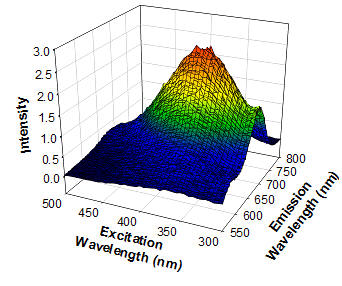
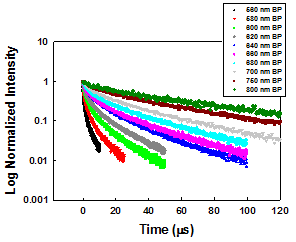
pSi spectroscopy (left) and photophysics (right)
We are also collaborating with Prof. Vamsy P. Chodavarapu in McGill University’s Electrical and Computing Engineering Department (http://www.ece.mcgill.ca/~vchoda/homepage.htm) to develop integrated sensor platforms based on xerogel-based chemical sensors and low power, high-performance complementary metal oxide semi-conductor (CMOS) arrays.
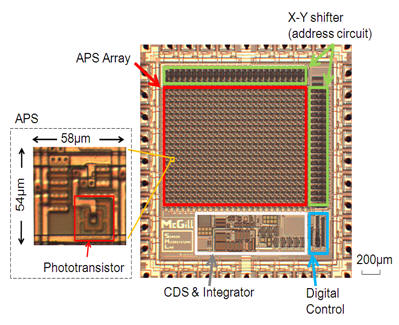
High performance CMOS-based detection chip for sensor microarrays
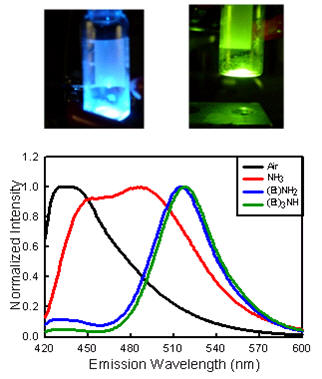
Analyte-responsive ionic liquid
In collaboration with Prof. Gary A. Baker in the University of Missouri’s Department of Chemistry (update, moving from ORNL) we are evaluating new fluorescent ionic liquids and determining their unique photophysics
Anti-fouling/Fouling Release Films
In collaboration with Prof. Michael R. Detty in UB’s Department of Chemistry (http://chemistry.buffalo.edu/people/faculty/detty/) we are developing advanced anti-fouling/fouling release materials for use in fresh water and marine applications. These efforts exploit the tailorability of nanoporous xerogels in concert with innovative catalysts and use intrinsic agents in the environment to create robust surfaces that are less prone to fouling/exhibit superior fouling release characteristics.
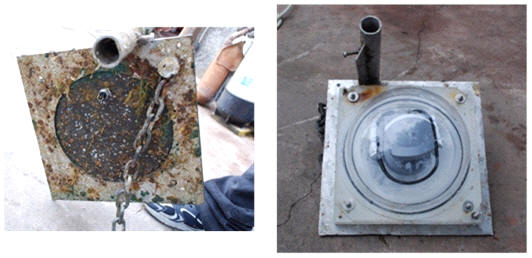
Fouled (uncoated, left) and unfoulded (coated, right) marine sub-surface cameras
Benign Chemistry
We are striving to determine the dynamics within polymeric membrane architectures that are used for H2 purification applications. In collaboration with Prof. Javid Rzayev in UB’s Department of Chemistry (http://chemistry.buffalo.edu/people/faculty/rzayev/) we are creating monolayer surfaces on silica substrates and investigating the monolayer interfacial dynamics in contact with supercritical fluids as a function of fluid composition and density.
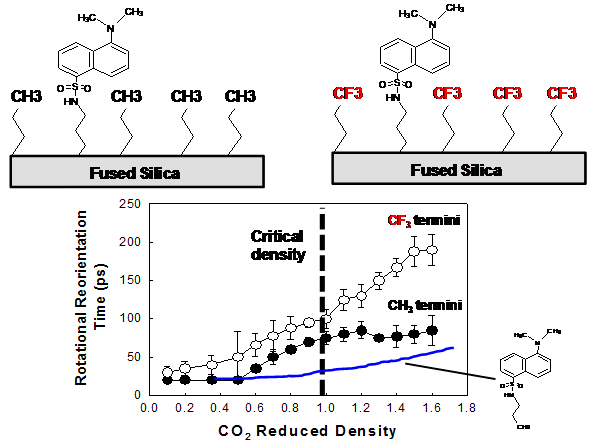
Effects of chain termini and supercritical CO2 density on dansyl interfacial rotational dynamics
Wound Repair
In a multidisciplinary team effort with researchers across campus, at Roswell Park Cancer Institute, and Daemen College we are developing novel resorbable laminated repair membranes that can deliver active protein ‘drugs’ and accelerate and sustain wound repair.
Joseph A. Gardella Jr, UB, Department of Chemistry (http://www.chemistry.buffalo.edu/people/faculty/gardella/)Alexander N. Cartwright, UB, Department of Electrical Engineering (http://www.ee.buffalo.edu/faculty/cartwright/)
Robert Hard, Department of Pathology (http://deptdirectory.med.buffalo.edu/profile/facultyprofile.asp?ht=dd&fid=0F70L4CL2)
Bahattin Koc, UB, Department of Industrial and Systems Engineering (http://www.eng.buffalo.edu/~bkoc/)
Wesley L. Hicks Jr, Roswell Park Cancer Institute, Prof. , Department of Head & Neck/Plastic & Reconstructive Surgery (http://www.roswellpark.org/bio/wesley-hicks-jr-md-facs)
Laura E. Edsberg, Daemen College (http://www.daemen.edu/academics/divisionofartssciences/naturalsciences/faculty/Pages/LauraEdsberg.aspx)
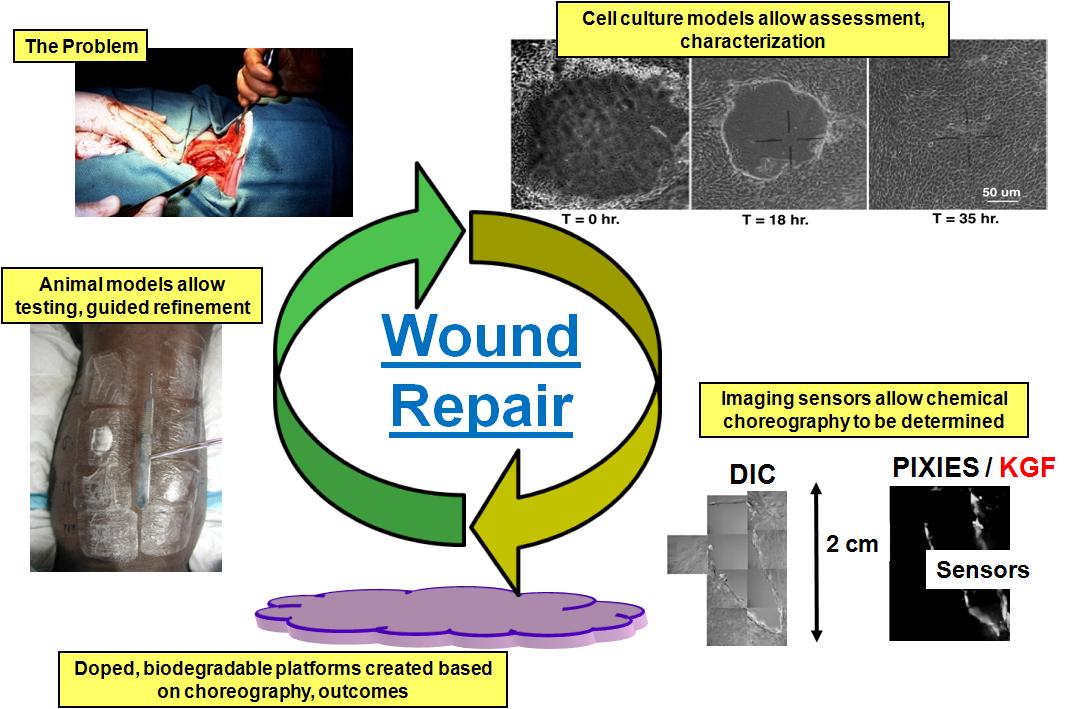
Team strategy for accelerating and sustaining wound repair
